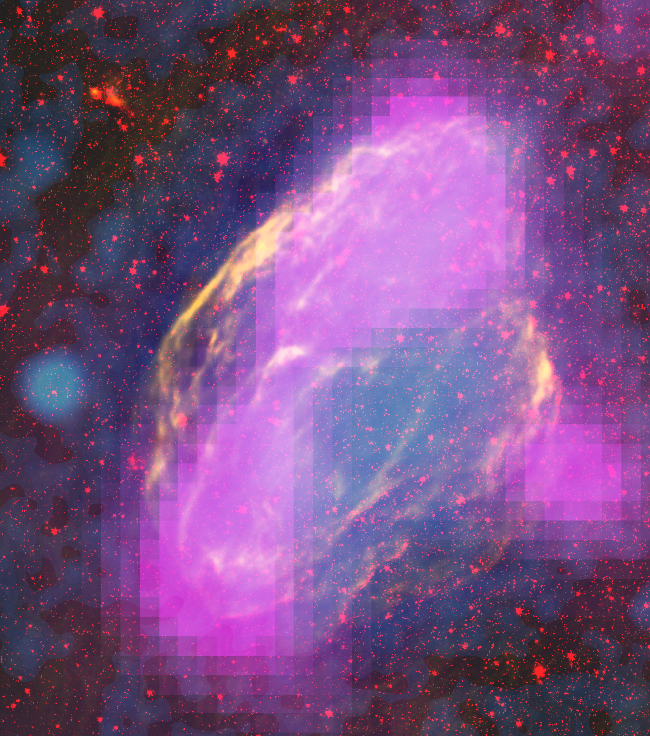
 Credit: NASA/DOE/Fermi LAT Collaboration, ROSAT, JPL-Caltech, and NRAO/AUI
Credit: NASA/DOE/Fermi LAT Collaboration, ROSAT, JPL-Caltech, and NRAO/AUI
Focusing on the Accelerators
The origin of Galactic cosmic rays, high energy pieces of atoms from deep space, is one of the long-standing mysteries of astrophysics. What breaks these atoms apart, and what accelerates them to the enormous energies observed? These energies can be so high that a single cosmic ray particle can pack as much wallop as a Randy Johnson fastball. The Fermi Gamma Ray Space Telescope, launched just a year and a half ago, is already helping to put some of these broken puzzle pieces together. Fermi's sensitivity to high energy Gamma-rays, along with its impressive ability to spatially-resolve extended Gamma-ray sources, have shown that gamma-ray emission is clearly associated with the collisions of high energy cosmic rays and other gas in supernova remnants. An example is shown in the image above of a supernova remnant called W44. High energy gamma-ray emission detected by Fermi, shown in magenta, clearly aligns with filaments of shocked gas at the outer boundary of the supernova produced as the stellar explosion rips into its galactic enviroment. These shocked filaments are detectable in low-energy X-rays (shown in blue, from the German-led ROSAT mission), infrared (red, from NASA's Spitzer Space Telescope), and radio (orange, from NRAO's Very Large Array). The Fermi observations show that younger remnants are brighter at the highest gamma-ray energies than older remnants. This suggests that the highest energy cosmic rays decline or escape as a remnant ages, an important clue about the workings of these cosmic particle accelerators.
Published: March 1, 2010
<
HEA Dictionary ● Archive
● Search HEAPOW
● Other Languages
● HEAPOW on Facebook
● Download all Images
● Education ● HEAD
>

Each week the HEASARC
brings you new, exciting and beautiful images from X-ray and Gamma ray
astronomy. Check back each week and be sure to check out the HEAPOW archive!
Page Author: Dr. Michael F. Corcoran
Last modified Monday, 26-Feb-2024 17:47:40 EST


